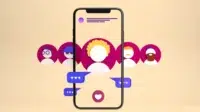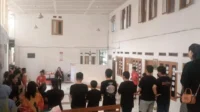Introduction
Motivation is a crucial factor influencing students’ academic success. Learning motivation is an intrinsic drive that propels students towards achieving specific goals. It significantly contributes to academic achievement, as students’ actions and efforts largely depend on the strength of this drive. Highly motivated students tend to be active, grasp material easily, and achieve better results.
Unfortunately, numerous obstacles hinder the enhancement of student learning motivation, particularly at the elementary level. These include monotonous teaching methods, unsupportive learning environments, and inadequate teacher-student relationships.
Conventional teaching approaches often lead to student boredom, passivity, reduced concentration, and diminished critical thinking skills. However, elementary school students are naturally curious, exploratory, active, and enjoy group work.
Therefore, teaching methods that are active, engaging, and aligned with their characteristics are essential. Participatory learning, an approach that actively involves students from planning to evaluation, has proven effective in boosting both motivation and learning outcomes. Its principles are child-centered, experience-based, and grounded in student needs.
The Urgency of Participatory Learning Methods in Enhancing Learning Motivation
Low learning motivation among elementary students stems from conventional, monotonous teaching methods and unsupportive learning environments. Students exhibit symptoms such as lack of enthusiasm, quick boredom, difficulty focusing, and even negative emotions during learning. To address this, participatory learning involves students actively in all stages of the learning process, from planning and implementation to evaluation.
This method employs strategies like group discussions, creative projects, student presentations, feedback provision, and fostering a democratic and enjoyable learning environment.
It significantly enhances students’ intrinsic motivation, characterized by increased curiosity, responsibility, self-confidence, and a spirit of exploration. Furthermore, it boosts extrinsic motivation, leading to improved academic performance and social skills in a supportive, low-pressure learning environment.
Read more: Technology Can Increase Intrest in Children Learning
The success of this method relies on supporting factors such as the teacher’s role as a facilitator, well-arranged learning environments, and adequate educational resources. Thus, participatory learning is a viable alternative to conventional methods for enhancing elementary students’ motivation and learning quality.
Factors Contributing to Low Learning Motivation in Elementary School Students
Focusing on low student learning motivation, the current learning process is still dominated by conventional, monotonous methods that fail to actively engage students. This leads to students becoming passive, easily bored, distracted, and showing signs of fatigue and decreased enthusiasm for learning.
Moreover, the use of unvaried learning media and learning environments that are neither dynamic nor democratic reduce comfort and pedagogical effectiveness.
Another factor exacerbating student motivation is limited positive interaction between teachers and students. A lack of two-way communication and minimal opportunities for student participation make the learning process unengaging and limit children’s exploratory potential.
Conversely, elementary school-aged children are typically highly curious, enjoy group work, are physically active, and prefer direct involvement in learning activities. This situation highlights a mismatch between applied teaching approaches and the developmental characteristics of elementary students, which inherently demand active engagement and enjoyable methods.
Collectively, these issues lead to a decline in both intrinsic and extrinsic student motivation. This low motivation not only impedes academic achievement but also negatively impacts character development, critical and creative thinking skills, and social interaction within the school environment.
Therefore, innovative educational efforts are needed to holistically enhance student participation and motivation. The implementation of participatory learning methods is considered a relevant approach to address these challenges.
Alternative Learning Methods to Enhance Learning Motivation
To counter low student motivation caused by monotonous teaching methods and unsupportive learning environments, the proposed solution is the implementation of participatory learning. This method emphasizes active student involvement across all stages of the learning process, from planning and implementation to evaluation. Its application is designed around several key strategies:
1. Group Discussions:
Students are divided into small groups to discuss specific topics. This strategy enhances critical thinking, collaboration, and self-confidence by providing students with a platform to express their opinions openly.
2. Project Activities:
Project-based tasks, such as creating posters or classroom projects, train students in creativity, responsibility, and time management. These activities also provide an enjoyable and meaningful learning experience.
3. Presentation of Discussion/Project Results:
Students present their work to the class, which boosts their public speaking skills and self-confidence. Appreciation from teachers and peers further strengthens motivation.
4. Evaluation and Feedback:
Teachers regularly provide evaluation and feedback, including praise or rewards, along with constructive suggestions. This cultivates a continuous desire for learning and self-improvement.
5. Dynamic and Democratic Learning Environment:
Teachers foster a flexible, enjoyable, and supportive learning atmosphere. Learning also takes place outside the classroom to break monotony. Students are encouraged to actively share ideas without fear, thereby increasing learning motivation.
Furthermore, this method is considered effective as it accommodates three children’s learning styles—auditory, visual, and kinesthetic—and strengthens positive student characteristics such as responsibility, cooperation, nationalism, and courage in expression.
Conclusion
In conclusion, low learning motivation among elementary school students is attributed to monotonous teaching methods, unsupportive learning environments, and insufficient active student involvement in the learning process. This consequently leads to a decline in students’ intrinsic and extrinsic interest, enthusiasm, and learning outcomes.
Participatory learning emerges as a relevant and effective alternative solution to enhance student motivation. Through strategies such as group discussions, project activities, presentations, feedback-based evaluations, and the provision of democratic and enjoyable learning environments, students become actively engaged, feel valued, and develop a sense of responsibility in their learning.
This method not only boosts learning motivation but also cultivates social skills, self-confidence, and positive student characteristics.
Therefore, participatory learning is highly recommended for widespread implementation at the elementary school level as an approach capable of addressing the challenges of conventional education and supporting the achievement of more meaningful and comprehensive educational goals for students.
Author: Zakiyah Sakina
Arabic Education Department, Faculty of Islamic Studies, Universitas Muhammadiyah Prof. Dr. Hamka
Supervisor: Dr. Muhammad Iman Sastra Mihajat
Editor: Salwa Alifah Yusrina
Bahasa: Rahmat Al Kafi
Ikuti berita terbaru Media Mahasiswa Indonesia di Google News















